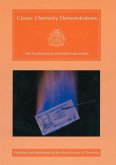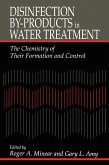Oxygen, Acids, and Water
Eight Chapters from the Elementary Treatise on Chemistry
Herausgeber: Fisher, Howard J / Übersetzer: Burke, Chester; Holtzman, Matthew / Mitwirkender: Lavoisier, Antoine
Schade – dieser Artikel ist leider ausverkauft. Sobald wir wissen, ob und wann der Artikel wieder verfügbar ist, informieren wir Sie an dieser Stelle.
Oxygen, Acids, and Water
Eight Chapters from the Elementary Treatise on Chemistry
Herausgeber: Fisher, Howard J / Übersetzer: Burke, Chester; Holtzman, Matthew / Mitwirkender: Lavoisier, Antoine
- Broschiertes Buch
- Merkliste
- Auf die Merkliste
- Bewerten Bewerten
- Teilen
- Produkt teilen
- Produkterinnerung
- Produkterinnerung
One of the most revolutionary scientific works ever written, and also one of the most accessible, Lavoisier's Elementary -Treatise on Chemistry established the constancy of weight in chemical reactions, revealed the composition of water, and set forth a clear concept of the nature of gases. The Treatise cemented a new, -rational nomenclature that accurately expressed the nature of materials, overthrowing such colorful but deceptive names as "flowers of sulfur" and "butter of arsenic."
Andere Kunden interessierten sich auch für
![A New Foundation for Chemistry A New Foundation for Chemistry]() Antoine LavoisierA New Foundation for Chemistry17,99 €
Antoine LavoisierA New Foundation for Chemistry17,99 €![Classic Chemistry Demonstrations Classic Chemistry Demonstrations]() Ted ListerClassic Chemistry Demonstrations39,99 €
Ted ListerClassic Chemistry Demonstrations39,99 €![The Rise and Development of the Liquefaction of Gases The Rise and Development of the Liquefaction of Gases]() Willett Lepley HardinThe Rise and Development of the Liquefaction of Gases23,99 €
Willett Lepley HardinThe Rise and Development of the Liquefaction of Gases23,99 €![Science as Public Culture Science as Public Culture]() Jan GolinskiScience as Public Culture43,99 €
Jan GolinskiScience as Public Culture43,99 €![Organic Chemistry in its Applications to Agriculture and Physiology Organic Chemistry in its Applications to Agriculture and Physiology]() Justus LiebigOrganic Chemistry in its Applications to Agriculture and Physiology27,99 €
Justus LiebigOrganic Chemistry in its Applications to Agriculture and Physiology27,99 €![Disinfection By-Products in Water Treatmentthe Chemistry of Their Formation and Control Disinfection By-Products in Water Treatmentthe Chemistry of Their Formation and Control]() Roger A MinearDisinfection By-Products in Water Treatmentthe Chemistry of Their Formation and Control78,99 €
Roger A MinearDisinfection By-Products in Water Treatmentthe Chemistry of Their Formation and Control78,99 €
One of the most revolutionary scientific works ever written, and also one of the most accessible, Lavoisier's Elementary -Treatise on Chemistry established the constancy of weight in chemical reactions, revealed the composition of water, and set forth a clear concept of the nature of gases. The Treatise cemented a new, -rational nomenclature that accurately expressed the nature of materials, overthrowing such colorful but deceptive names as "flowers of sulfur" and "butter of arsenic."
Produktdetails
- Produktdetails
- Verlag: Green Lion Press
- Seitenzahl: 120
- Erscheinungstermin: 7. Mai 2019
- Englisch
- Abmessung: 251mm x 178mm x 10mm
- Gewicht: 227g
- ISBN-13: 9781888009514
- ISBN-10: 1888009519
- Artikelnr.: 56403341
- Herstellerkennzeichnung
- Libri GmbH
- Europaallee 1
- 36244 Bad Hersfeld
- gpsr@libri.de
- Verlag: Green Lion Press
- Seitenzahl: 120
- Erscheinungstermin: 7. Mai 2019
- Englisch
- Abmessung: 251mm x 178mm x 10mm
- Gewicht: 227g
- ISBN-13: 9781888009514
- ISBN-10: 1888009519
- Artikelnr.: 56403341
- Herstellerkennzeichnung
- Libri GmbH
- Europaallee 1
- 36244 Bad Hersfeld
- gpsr@libri.de
About Antoine Lavoisier 26 August 1743-8 May 1794 Lavoisier's accomplishments in chemistry were numerous and consequential; but central to them all was his appreciation of the importance of weight in chemical reactions-an insight which changed chemistry from a qualitative science to a quantitative one. A quantitative science depends on measurement; and in the eighteenth century, instruments capable of precision performance were enormously expensive to build. Because Lavoisier had inherited a large fortune, he possessed the means to construct and maintain a large and sophisticated laboratory and furnish it with superbly-crafted scientific apparatus. Lavoisier married Marie-Anne Pierrette Paulze in 1771. She was to become deeply involved in Lavoisier's scientific activities, assisting in the laboratory, documenting experiments and apparatus in sketches and notes, and translating the scientific writings of English researchers. It was she who prepared the engravings for the 1789 publication of the Elementary Treatise on Chemistry-engravings that are reproduced in this Green Cat Module. Lavoisier's principal achievements and fame lay in the field of chemistry. Nevertheless, throughout his life he devoted substantial efforts towards social good, promoting improvements in agriculture, air and water quality, and public health. In 1768 Lavoisier purchased a share in a company that collected customs, excise, and other taxes under royal charter. Although the income from this source helped finance his scientific work, Lavoisier's association with tax collection later made him a target of the revolutionary powers; he was put to death on 8 May 1794 at age 50. The mathematician Lagrange memorialized Lavoisier's execution with these words: "It took them but an instant to cut off this head, and one hundred years might not suffice to produce another like it." A year and a half after his death, Lavoisier was exonerated by the French government. In order
Table of Contents
The Green Lion's Preface: Note on the Translation . . . . . . . . . . . . .
. . . . . . . . . . . . . . . . . . vii
About Antoine Lavoisier . . . . . . . . . . . . . . . . . . . . . . . . . .
. . . . . . . . . . . . . . . . . . . . . . . . . . ix
Editor's Introduction. . . . . . . . . . . . . . . . . . . . . . . . . . .
. . . . . . . . . . . . . . . . . . . . . . . . . . . . . xi
Elementary Treatise on Chemistry
Part I
Preliminary Discourse . . . . . . . . . . . . . . . . . . . . . . . . . . .
. . . . . . . . . . . . . . . . . . . . . . . . . . . 1
Chapter One . . . . . . . . . . . . . . . . . . . . . . . . . . . . . . . .
. . . . . . . . . . . . . . . . . . . . . . . . . . . . . . 13
On Caloric Compounds and the Formation of Elastic, Aeriform Fluids
Chapter Two . . . . . . . . . . . . . . . . . . . . . . . . . . . . . . . .
. . . . . . . . . . . . . . . . . . . . . . . . . . . . . . 32
Overall Views on the Formation and Constitution of the
Earth's Atmosphere
Chapter Three . . . . . . . . . . . . . . . . . . . . . . . . . . . . . . .
. . . . . . . . . . . . . . . . . . . . . . . . . . . . . . 36
The Analysis of Atmospheric Air: Its Resolution into Two Elastic Fluids,
One Respirable and the Other Non-respirable
Chapter Four . . . . . . . . . . . . . . . . . . . . . . . . . . . . . . .
. . . . . . . . . . . . . . . . . . . . . . . . . . . . . . . 51
A Nomenclature for the Different Constituent Parts of Atmospheric Air
Chapter Five . . . . . . . . . . . . . . . . . . . . . . . . . . . . . . .
. . . . . . . . . . . . . . . . . . . . . . . . . . . . . . . 55
On the Decomposition of Oxygen Gas by Sulphur, Phosphorus,
and Charcoal, and on the Formation of Acids in General
Chapter Six . . . . . . . . . . . . . . . . . . . . . . . . . . . . . . . .
. . . . . . . . . . . . . . . . . . . . . . . . . . . . . . . 67
On the Nomenclature of Acids in General, and, in Particular, on
Those Extracted from Saltpeter and Sea Salt
Chapter Seven . . . . . . . . . . . . . . . . . . . . . . . . . . . . . . .
. . . . . . . . . . . . . . . . . . . . . . . . . . . . . .76
On the Decomposition of Oxygen Gas by Metals, and on the
Formation of Metallic Oxides
Chapter Eight . . . . . . . . . . . . . . . . . . . . . . . . . . . . . . .
. . . . . . . . . . . . . . . . . . . . . . . . . . . . . . 80
On the Radical Principle of Water, and on the Decomposition of Water
by Charcoal and by Iron
Chapter Seventeen (excerpt) . . . . . . . . . . . . . . . . . . . . . . . .
. . . . . . . . . . . . . . . . . . . . . . . . 91
Appendix: French Pre-Revolutionary Weights and Measures . . . . . . . . . .
. . . . . . . . . . . . . . . 93
Glossary of Names and Terms . . . . . . . . . . . . . . . . . . . . . . . .
. . . . . . . . . . . . . . . . . . . . . . 95
Index . . . . . . . . . . . . . . . . . . . . . . . . . . . . . . . . . . .
. . . . . . . . . . . . . . . . . . . . . . . . . . . . . . . . . 103
In order
The Green Lion's Preface: Note on the Translation . . . . . . . . . . . . .
. . . . . . . . . . . . . . . . . . vii
About Antoine Lavoisier . . . . . . . . . . . . . . . . . . . . . . . . . .
. . . . . . . . . . . . . . . . . . . . . . . . . . ix
Editor's Introduction. . . . . . . . . . . . . . . . . . . . . . . . . . .
. . . . . . . . . . . . . . . . . . . . . . . . . . . . . xi
Elementary Treatise on Chemistry
Part I
Preliminary Discourse . . . . . . . . . . . . . . . . . . . . . . . . . . .
. . . . . . . . . . . . . . . . . . . . . . . . . . . 1
Chapter One . . . . . . . . . . . . . . . . . . . . . . . . . . . . . . . .
. . . . . . . . . . . . . . . . . . . . . . . . . . . . . . 13
On Caloric Compounds and the Formation of Elastic, Aeriform Fluids
Chapter Two . . . . . . . . . . . . . . . . . . . . . . . . . . . . . . . .
. . . . . . . . . . . . . . . . . . . . . . . . . . . . . . 32
Overall Views on the Formation and Constitution of the
Earth's Atmosphere
Chapter Three . . . . . . . . . . . . . . . . . . . . . . . . . . . . . . .
. . . . . . . . . . . . . . . . . . . . . . . . . . . . . . 36
The Analysis of Atmospheric Air: Its Resolution into Two Elastic Fluids,
One Respirable and the Other Non-respirable
Chapter Four . . . . . . . . . . . . . . . . . . . . . . . . . . . . . . .
. . . . . . . . . . . . . . . . . . . . . . . . . . . . . . . 51
A Nomenclature for the Different Constituent Parts of Atmospheric Air
Chapter Five . . . . . . . . . . . . . . . . . . . . . . . . . . . . . . .
. . . . . . . . . . . . . . . . . . . . . . . . . . . . . . . 55
On the Decomposition of Oxygen Gas by Sulphur, Phosphorus,
and Charcoal, and on the Formation of Acids in General
Chapter Six . . . . . . . . . . . . . . . . . . . . . . . . . . . . . . . .
. . . . . . . . . . . . . . . . . . . . . . . . . . . . . . . 67
On the Nomenclature of Acids in General, and, in Particular, on
Those Extracted from Saltpeter and Sea Salt
Chapter Seven . . . . . . . . . . . . . . . . . . . . . . . . . . . . . . .
. . . . . . . . . . . . . . . . . . . . . . . . . . . . . .76
On the Decomposition of Oxygen Gas by Metals, and on the
Formation of Metallic Oxides
Chapter Eight . . . . . . . . . . . . . . . . . . . . . . . . . . . . . . .
. . . . . . . . . . . . . . . . . . . . . . . . . . . . . . 80
On the Radical Principle of Water, and on the Decomposition of Water
by Charcoal and by Iron
Chapter Seventeen (excerpt) . . . . . . . . . . . . . . . . . . . . . . . .
. . . . . . . . . . . . . . . . . . . . . . . . 91
Appendix: French Pre-Revolutionary Weights and Measures . . . . . . . . . .
. . . . . . . . . . . . . . . 93
Glossary of Names and Terms . . . . . . . . . . . . . . . . . . . . . . . .
. . . . . . . . . . . . . . . . . . . . . . 95
Index . . . . . . . . . . . . . . . . . . . . . . . . . . . . . . . . . . .
. . . . . . . . . . . . . . . . . . . . . . . . . . . . . . . . . 103
In order
Table of Contents
The Green Lion's Preface: Note on the Translation . . . . . . . . . . . . .
. . . . . . . . . . . . . . . . . . vii
About Antoine Lavoisier . . . . . . . . . . . . . . . . . . . . . . . . . .
. . . . . . . . . . . . . . . . . . . . . . . . . . ix
Editor's Introduction. . . . . . . . . . . . . . . . . . . . . . . . . . .
. . . . . . . . . . . . . . . . . . . . . . . . . . . . . xi
Elementary Treatise on Chemistry
Part I
Preliminary Discourse . . . . . . . . . . . . . . . . . . . . . . . . . . .
. . . . . . . . . . . . . . . . . . . . . . . . . . . 1
Chapter One . . . . . . . . . . . . . . . . . . . . . . . . . . . . . . . .
. . . . . . . . . . . . . . . . . . . . . . . . . . . . . . 13
On Caloric Compounds and the Formation of Elastic, Aeriform Fluids
Chapter Two . . . . . . . . . . . . . . . . . . . . . . . . . . . . . . . .
. . . . . . . . . . . . . . . . . . . . . . . . . . . . . . 32
Overall Views on the Formation and Constitution of the
Earth's Atmosphere
Chapter Three . . . . . . . . . . . . . . . . . . . . . . . . . . . . . . .
. . . . . . . . . . . . . . . . . . . . . . . . . . . . . . 36
The Analysis of Atmospheric Air: Its Resolution into Two Elastic Fluids,
One Respirable and the Other Non-respirable
Chapter Four . . . . . . . . . . . . . . . . . . . . . . . . . . . . . . .
. . . . . . . . . . . . . . . . . . . . . . . . . . . . . . . 51
A Nomenclature for the Different Constituent Parts of Atmospheric Air
Chapter Five . . . . . . . . . . . . . . . . . . . . . . . . . . . . . . .
. . . . . . . . . . . . . . . . . . . . . . . . . . . . . . . 55
On the Decomposition of Oxygen Gas by Sulphur, Phosphorus,
and Charcoal, and on the Formation of Acids in General
Chapter Six . . . . . . . . . . . . . . . . . . . . . . . . . . . . . . . .
. . . . . . . . . . . . . . . . . . . . . . . . . . . . . . . 67
On the Nomenclature of Acids in General, and, in Particular, on
Those Extracted from Saltpeter and Sea Salt
Chapter Seven . . . . . . . . . . . . . . . . . . . . . . . . . . . . . . .
. . . . . . . . . . . . . . . . . . . . . . . . . . . . . .76
On the Decomposition of Oxygen Gas by Metals, and on the
Formation of Metallic Oxides
Chapter Eight . . . . . . . . . . . . . . . . . . . . . . . . . . . . . . .
. . . . . . . . . . . . . . . . . . . . . . . . . . . . . . 80
On the Radical Principle of Water, and on the Decomposition of Water
by Charcoal and by Iron
Chapter Seventeen (excerpt) . . . . . . . . . . . . . . . . . . . . . . . .
. . . . . . . . . . . . . . . . . . . . . . . . 91
Appendix: French Pre-Revolutionary Weights and Measures . . . . . . . . . .
. . . . . . . . . . . . . . . 93
Glossary of Names and Terms . . . . . . . . . . . . . . . . . . . . . . . .
. . . . . . . . . . . . . . . . . . . . . . 95
Index . . . . . . . . . . . . . . . . . . . . . . . . . . . . . . . . . . .
. . . . . . . . . . . . . . . . . . . . . . . . . . . . . . . . . 103
In order
The Green Lion's Preface: Note on the Translation . . . . . . . . . . . . .
. . . . . . . . . . . . . . . . . . vii
About Antoine Lavoisier . . . . . . . . . . . . . . . . . . . . . . . . . .
. . . . . . . . . . . . . . . . . . . . . . . . . . ix
Editor's Introduction. . . . . . . . . . . . . . . . . . . . . . . . . . .
. . . . . . . . . . . . . . . . . . . . . . . . . . . . . xi
Elementary Treatise on Chemistry
Part I
Preliminary Discourse . . . . . . . . . . . . . . . . . . . . . . . . . . .
. . . . . . . . . . . . . . . . . . . . . . . . . . . 1
Chapter One . . . . . . . . . . . . . . . . . . . . . . . . . . . . . . . .
. . . . . . . . . . . . . . . . . . . . . . . . . . . . . . 13
On Caloric Compounds and the Formation of Elastic, Aeriform Fluids
Chapter Two . . . . . . . . . . . . . . . . . . . . . . . . . . . . . . . .
. . . . . . . . . . . . . . . . . . . . . . . . . . . . . . 32
Overall Views on the Formation and Constitution of the
Earth's Atmosphere
Chapter Three . . . . . . . . . . . . . . . . . . . . . . . . . . . . . . .
. . . . . . . . . . . . . . . . . . . . . . . . . . . . . . 36
The Analysis of Atmospheric Air: Its Resolution into Two Elastic Fluids,
One Respirable and the Other Non-respirable
Chapter Four . . . . . . . . . . . . . . . . . . . . . . . . . . . . . . .
. . . . . . . . . . . . . . . . . . . . . . . . . . . . . . . 51
A Nomenclature for the Different Constituent Parts of Atmospheric Air
Chapter Five . . . . . . . . . . . . . . . . . . . . . . . . . . . . . . .
. . . . . . . . . . . . . . . . . . . . . . . . . . . . . . . 55
On the Decomposition of Oxygen Gas by Sulphur, Phosphorus,
and Charcoal, and on the Formation of Acids in General
Chapter Six . . . . . . . . . . . . . . . . . . . . . . . . . . . . . . . .
. . . . . . . . . . . . . . . . . . . . . . . . . . . . . . . 67
On the Nomenclature of Acids in General, and, in Particular, on
Those Extracted from Saltpeter and Sea Salt
Chapter Seven . . . . . . . . . . . . . . . . . . . . . . . . . . . . . . .
. . . . . . . . . . . . . . . . . . . . . . . . . . . . . .76
On the Decomposition of Oxygen Gas by Metals, and on the
Formation of Metallic Oxides
Chapter Eight . . . . . . . . . . . . . . . . . . . . . . . . . . . . . . .
. . . . . . . . . . . . . . . . . . . . . . . . . . . . . . 80
On the Radical Principle of Water, and on the Decomposition of Water
by Charcoal and by Iron
Chapter Seventeen (excerpt) . . . . . . . . . . . . . . . . . . . . . . . .
. . . . . . . . . . . . . . . . . . . . . . . . 91
Appendix: French Pre-Revolutionary Weights and Measures . . . . . . . . . .
. . . . . . . . . . . . . . . 93
Glossary of Names and Terms . . . . . . . . . . . . . . . . . . . . . . . .
. . . . . . . . . . . . . . . . . . . . . . 95
Index . . . . . . . . . . . . . . . . . . . . . . . . . . . . . . . . . . .
. . . . . . . . . . . . . . . . . . . . . . . . . . . . . . . . . 103
In order







